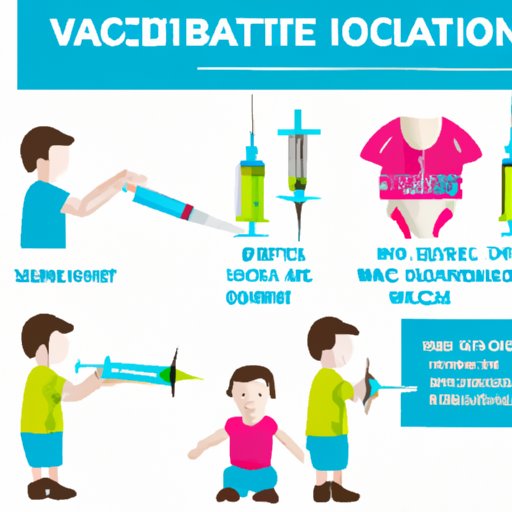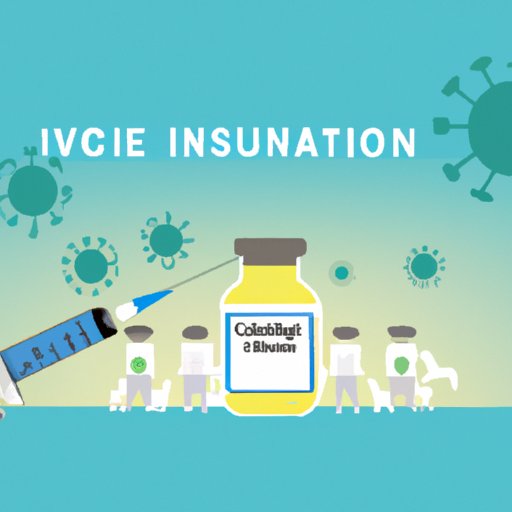Introduction
Vaccines are an important part of modern healthcare. They have been used for centuries to protect people from infectious diseases and have saved countless lives. In recent years, vaccines have become even more prevalent as researchers continue to develop new vaccines that can help protect people from a wide range of illnesses. But how exactly do these vaccines work? How do they travel through the body and what role do they play in keeping us healthy? This article will explore these questions and provide an in-depth look at how vaccines work in the human body.
Examining the Process of How a Vaccine Travels Through the Body
When a person receives a vaccine, it enters their body and triggers an immune response. The body recognizes the vaccine as a foreign substance and produces antibodies to fight it off. These antibodies then circulate throughout the body, attacking any other foreign substances that may enter the body and helping to protect against infection. But how does the vaccine actually travel through the body? Let’s take a closer look at the biological steps involved in vaccine delivery.
The first step is for the vaccine to be injected into the body. Depending on the type of vaccine, this can be done either intramuscularly (into the muscle) or subcutaneously (under the skin). Once the vaccine has been injected, it is taken up by the immune cells of the body. These cells then transport the vaccine to the lymph nodes, where it is processed and presented to the rest of the immune system. From there, the vaccine is spread throughout the body, where it stimulates the production of antibodies.
Different types of vaccines reach their target cells in different ways. Live attenuated vaccines, for example, contain weakened versions of the virus or bacteria that cause the disease. These viruses or bacteria replicate inside the body, triggering an immune response and stimulating the production of antibodies. Inactivated vaccines, on the other hand, contain dead forms of the virus or bacteria and must be taken up by the immune cells before they can trigger an immune response. Finally, recombinant vaccines contain pieces of genetic material from the virus or bacteria and must also be taken up by the immune cells before they can be effective.

Understanding the Safety and Efficacy of Vaccines in the Human Body
Vaccines are generally considered to be safe. They are closely monitored by regulatory bodies such as the U.S. Food and Drug Administration (FDA) to ensure that they meet safety standards. However, like any medical intervention, there is always a risk of side effects. Common side effects of vaccines include soreness and redness at the injection site, fever, and fatigue. More serious side effects, such as allergic reactions, are very rare but can occur.
Vaccines are also highly effective in preventing disease. Most vaccines are over 90% effective in preventing the diseases they are designed to protect against. This means that if 100 people receive the vaccine, only 10 of them will still be susceptible to the disease. Vaccines are also effective at preventing outbreaks of contagious diseases, as they reduce the number of people who can be infected.
Conclusion
Vaccines play an essential role in keeping people healthy by protecting them from infectious diseases. When a person receives a vaccine, it enters the body and triggers an immune response. This response causes the body to produce antibodies that defend against the virus or bacteria. Different types of vaccines travel through the body in different ways, depending on the type of vaccine. Vaccines are generally considered to be safe and are highly effective in preventing disease. They are an important part of modern healthcare and should be utilized whenever possible.
(Note: Is this article not meeting your expectations? Do you have knowledge or insights to share? Unlock new opportunities and expand your reach by joining our authors team. Click Registration to join us and share your expertise with our readers.)
